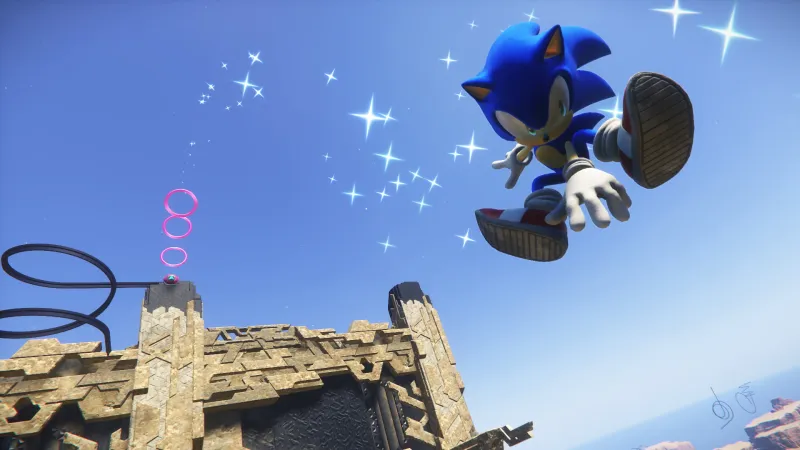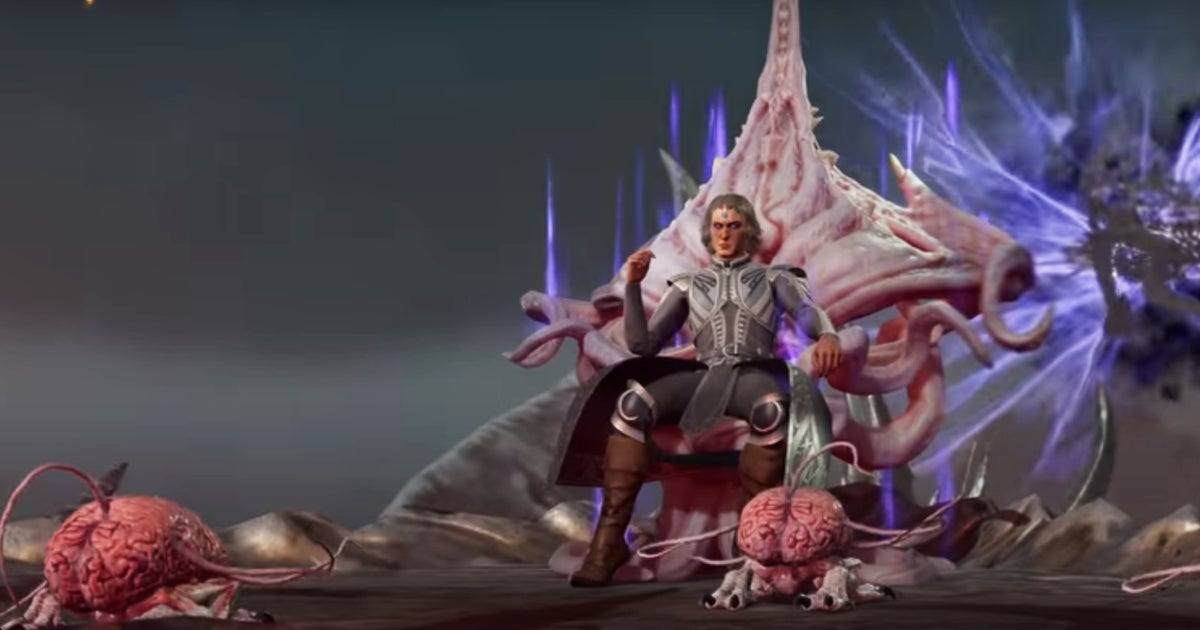In Sonic Frontiers, Sega finds the intersection between the series’ linear past and its “open-ended” future, doing worthy service to both eras of the franchise. The open Starfall islands offer immersive exploration, while linear Cyber Space stages offer the familiar, speed-based Sonic experience. While each side of the coin has flaws, Frontiers is an overall positive experience that gives the franchise a boost in the right direction.
Running through the open zones is often a joyful experience. Sonic controls remarkably well while running through the lush fields, sandy straights, and other biomes I encountered during my 30-hour playthrough. The islands offer terrific playgrounds through which Sonic grinds, propels and bounces; It’s consistently satisfying to slam a dash that propels you up a rail, off a spring, and into a series of rings. That satisfaction is underscored by how good it feels to chain these segments together thanks to the tight 3D gameplay.
The most notable new ability in Sonic’s arsenal is Cyloop, a blue trail that you activate with the push of a button. Cyloop is useful in combat – drawing a circle around enemies to deal damage, stun them, or break armor – but its main use is exploration; Whenever I didn’t know what to do, the answer was usually to draw a cyloop around the object in question. You can even run in circles to spawn infinite rings, a method I’ve used a lot in boss fights. I like this mechanic overall, but reasons to use it in the world felt overkill at times.
Additionally, several areas of the open zones are not optimized for exploration. The obstacle courses in the world are among the worst offenders. I lost track of how many times I tried to go in one direction, only to hit a dashboard that threw me hundreds of yards in the opposite direction before I knew what had happened. This dilemma is further brought into focus by horrifying pop-ins, mostly affecting the rails and platforming elements in the open areas, making it difficult to understand the best way to navigate. Other segments force you into a 2D perspective and lock you into a set path until you either complete the sequence or exit that area. Combined with various dead ends and areas that obviously feel hidden, Sonic Frontiers’ world design falls short of the standards of modern open-world games.
While the open-zone design sometimes lacks coherence, the islands do an excellent job of spreading out the core gameplay loop. Exploration rewards you with memory tokens for advancing the supporting characters’ stories, but aside from lore drops and map uncovering, scouring every corner of an island is rarely as fruitful as I would have liked.
When not sprinting back and forth between objectives, Sonic Frontiers offers players the most comprehensive combat mechanics in series history. What starts as button presses for melee combos evolves as you face new enemies who can counter and block your attacks. As you level up the skill tree, you’ll unlock more fast-paced combos to unleash devastating damage on your enemies. While the combat is far from peak, I enjoyed engaging with enemies as they spawned, and the collectibles and skill points made the encounters worthwhile.
Perhaps the greatest reward, however, comes from defeating enemies and mini-boss guardians in the open area. Featuring novel combats against a variety of monsters, these Guardians feature unique encounters that require you to use different tactics to win. From creatures that take you on a hunt across the world to a tank that forms a closed arena and turns the encounter into a bullet hell experience, I was always curious to see what bosses the next island hosted.
Defeating Guardians grants Cyber Space Gears, which allow you to access the linear, more traditional 3D Sonic levels. These phases concentrate the action into bite-sized chunks that often last under a few minutes. Each tier has four objectives that grant a Chaos Emerald Vault Key, the primary collectible for main story progression.
I loved playing the levels over and over again to achieve all these goals; Efficiently speedrunning these branching levels is incredibly satisfying. However, the S-Rank times are poorly balanced, meaning that sometimes I’d get the time on the first try, while others are unrealistic unless you nail a perfect run.
The culmination of each island is a massive boss fight against the Titan of that area. Each Titan battle is drastically different, but in all of them you face off against an incredibly large enemy as Super Sonic. With Sonic’s golden form invincible but slowly depleting the rings, the fights are more about beating the clock than worrying about damage. This dynamic often leads to frustration, as their attacks and projectile spam are designed to delay you while you watch your ring count drop. But with music that feels ripped straight out of an anime credits sequence and multi-phased battles that build to a climax with each transition, the epic, over-the-top nature of these battles won me over and some of the game’s most memorable moments come up.
Despite the magnitude of these bombastic boss battles, Sonic’s adventure is a largely solitary experience. Aside from occasional interactions with his friends and a mischievous AI character, our hero walks alone. This, combined with the minimalist musical score, sets a reflective tone that I quite enjoyed despite its seeming antithesis to the series’ speed theme.
This tone fits the darker narrative. The eponymous blue hedgehog is still the same fun-loving runabout. But with a plot revolving around a mysterious species who seemingly experienced tragedy long ago, this story is the most mature Sonic has ever experienced in games, and it largely works. The story features some of the best character moments and contextual callbacks in series history; from Sonic 3 to Sonic Forces, die-hard fans will love the characters’ fleeting references to their past adventures. I won’t spoil the conversation, but a conversation Sonic has with a friend about personal growth is as heartfelt as the franchise has ever been.
Despite being rough around the edges, Sonic Frontiers is the best 3D Sonic game in years. This first attempt at the Open Zone concept is an admirable effort and I can’t wait to see Sonic Team repeat this formula in future entries, but it’s obvious that this isn’t the final form of the formula. For now, Sonic Frontiers is a solid first foray into a brave new world for Sega’s speedy mascot.








